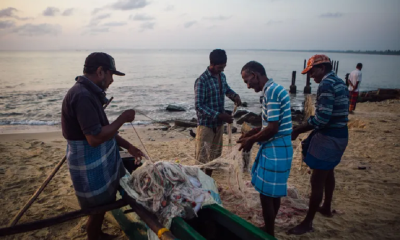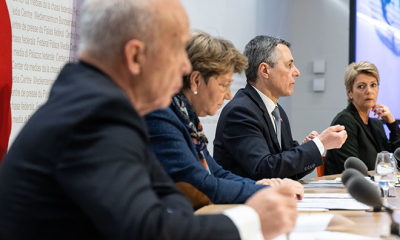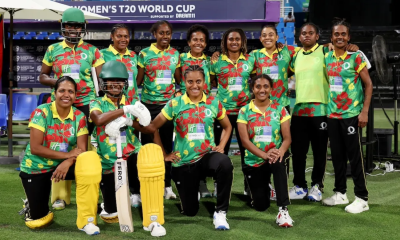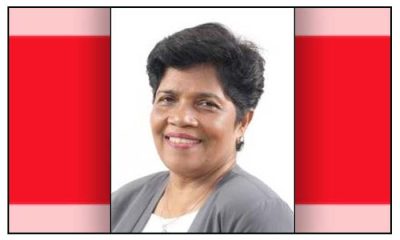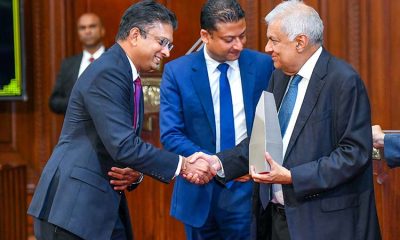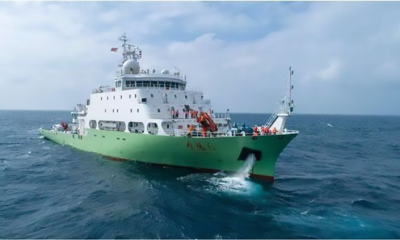Opinion
Dr A. T. Ariyaratne: A human being of iconic opulence
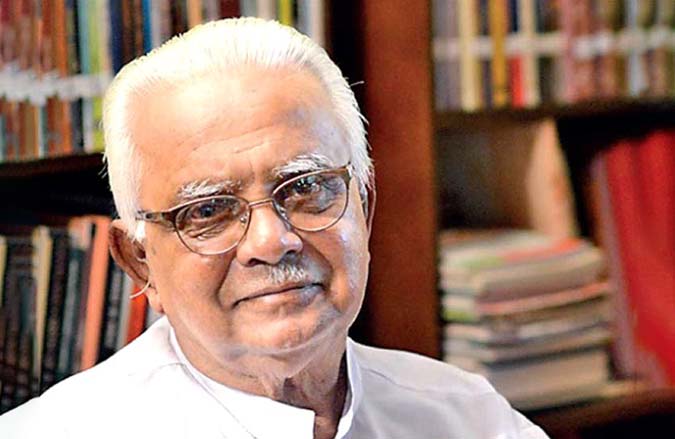
by Dr B. J. C. Perera
In the gigantic tapestry of humanity, there are those rare individuals who emerge as beacons of light, illuminating the path for others, with their wisdom, compassion, and altruism. Dr A. T. Ariyaratne, the esteemed Founder of the Sarvodaya Movement of Sri Lanka, was undeniably one such luminary; a man whose life was an extraordinary testament to the power of love, service, and spiritual awakening.
As we say goodbye to this great son of the soil, amidst the gentle whispers of intense sorrow and the resounding echoes of gratitude, we do honour the profound legacy of Dr Ariyaratne. He is a man like no other, whose very existence transcended the boundaries of time and space, leaving an indelible mark on the very fabric of reality. He was not just a mere person; he was a massive guiding force, and a source of inspiration for countless individuals across Sri Lanka and beyond. His passing leaves a void that cannot be filled, but his legacy will continue to shine brightly, enlightening the track for generations to come.
To speak of Dr Ariyaratne is to delve into the depths of human potential, to explore the boundless possibilities that arise when one has to talk about one who dared to dream, to envision, and to act with unwavering faith and conviction. His journey, though rooted in the soil of Sri Lanka, traversed the realms of the human spirit, touching hearts and igniting souls, right across the globe.
Dr Ariyaratne was more than just the founder of the Sarvodaya Movement; he was the very essence of its heart and soul. With unwavering dedication and boundless compassion, he dedicated his life to serving others, tirelessly working towards the betterment of society. His vision of a peaceful and harmonious world, built on the principles of love, compassion, and generosity, resonated deeply with people from all walks of life. Through his actions and teachings, he touched the lives of millions, instilling hope, fostering unity, and empowering communities to create positive change.
What set Dr. Ariyaratne apart was not just his extraordinary accomplishments, but the profound kindness and humility with which he carried himself. Despite his immense influence and stature, he remained humble and approachable, treating everyone he met with respect and dignity. He had that rare ability to connect with people on a personal level, listening with empathy, offering words of wisdom, and of course, inspiring them to believe in themselves.
At the heart of Dr Ariyaratne’s remarkable odyssey on Planet Earth lay the Sarvodaya Movement, which showed up as a profound manifestation of his vision for a world where every individual, regardless of creed, caste, or colour, could awaken to their inherent spirituality as well as potential, and contribute to the collective embroidery of peace and harmony. With a steadfast commitment to the Gandhian principles of non-violence, self-reliance, and community empowerment, he pioneered a path of transformation that transcended the limitations of the material realm and embraced the infinite potential of the human soul. In the words of the poet Rumi, “The beauty you see in me is a reflection of you.” Dr Ariyaratne’s life was a testament to the inherent beauty and divinity that resides within each and every one of us; a reminder that we are not merely separate beings, but interconnected threads in the rich drapery of existence.
Yet for all that, Dr. Ariyaratne’s impact extended far beyond the mere establishment of an organization. It permeated the very essence of human consciousness, awakening hearts to the inherent interconnectedness of all beings and inspiring a profound shift in perspective: one rooted in love, compassion, and reverence for all life.
But perhaps, amidst the splendour of his accomplishments and the profundity of his teachings, it is Dr Ariyaratne’s heart as a human being, a vessel of boundless love and compassion, that truly set him apart from lesser mortals. In his presence, one could not help but feel the gentle embrace of universal love, the soothing balm of empathy, and the radiant glow of inner peace.
For Dr Ariyaratne was not merely a leader or a visionary; he was a friend, a mentor, and a beacon of hope for all who crossed his path. With humility as his armour and kindness as his weapon, he embarked on a sacred mission to uplift humanity, perhaps even one at a time, and in doing so, he touched the lives of countless souls, leaving behind a legacy of love and transformation that shall endure for eternity.
In the hallowed halls of history, Dr. Ariyaratne’s name shall forever be inscribed as a paragon of virtue, a beacon of hope, and a guiding light for generations to come. His teachings, imbued with profound wisdom and illuminated by the radiance of his spirit, shall continue to echo through the corridors of time, inspiring souls to awaken to their true potential and embark on the sacred journey of self-discovery and service.
As we bid farewell to this earthly form of Dr Ariyaratne, let us not mourn his passing, but celebrate the profound gift of his presence in our lives. Let us honour his memory by embodying the principles of love, compassion, and service that he so tirelessly espoused, and by carrying forward the flame of his spirit into the darkest corners of the world, illuminating the path for all who seek solace and guidance.
In the words of Mahatma Gandhi, whom Dr. Ariyaratne greatly admired, “The best way to find yourself is to lose yourself in the service of others.” Dr Ariyaratne personified and exemplified this philosophy in everything he did, and his life stands as a testament to the power of compassion, empathy, and selflessness. Let us honour his memory by carrying forward his legacy, spreading love and kindness wherever we go, and working tirelessly towards the realization of his vision of a better world for all. Dr A. T. Ariyaratne may have left this world, but the dazzling light of his wonderful life will continue to shine brightly, guiding us towards a brighter future for generations to come.
Opinion
May Day: An election is approaching
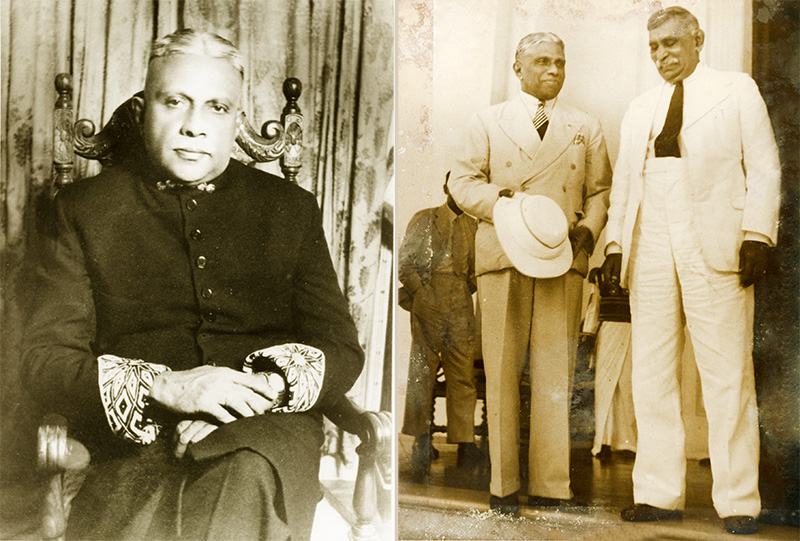
An election is approaching and all the political parties are ready to hammer and tongs at one another. Each promising the never-ending promises made over the years.
All the trade unions will be split up and taken under the wing of each party to make sure they shout the loudest.
Thus trade unions are robbed of a day to celebrate their rights. And: In all this mayhem, no politician remembers to pay tribute to the man who gave the workers their rights.
May Day was not created by A.E. Goonesinha for political rallies and marches. It was created to celebrate the worker. So, at least before all the madness starts, a tribute to this gentleman of decency and honesty should be priority.
The father of the Labour movement and trade unions in Ceylon – the former Minister of state and mayor of Colombo – A.E. Goonesinha!
Alexander Ekanayake Goonesinha was a gentleman who rose against the British hierarchy to free the worker and give him dignity and rights.
It was not an easy task at the time. There were Sri Lankans who fraternised with the British to win favours and who denounced and agitated against men who fought for the rights of the workers.
Days were spent in prison for the cause. Finally it proved successful and A.E. Goonesinha represented Ceylon at the British Empire Labour Conference in London in 1928 – to register May 1st as the worker’s day in Sri Lanka which was first held in 1927 under the leadership of A.E. Goonesinha.
He was also responsible for obtaining Universal Adult Suffrage from the Donoughmore Commission in 1928. Sri Lankan workers and the general public, regardless of income or eduation, were given the right to vote – including women’s franchise which is hardly ever mentioned today.
A.E. Goonesinha was one of the key persons in the struggle for independence. He was never one to mince his words. He was forthright and outspoken and worked only for the worker’s betterment in society. He later went as ambassador to Indonesia and Burma.
He was aksed by SWRD to join his party for the 1956 election, but A.E. Goonesinha did not agree with his policies and contested for his labour party. Today’s politicians jump from party to party according to their own private agendas. It’s a case of make hay while the sun shines and let the country go to the dogs.
Strength, determination, dedication, bravour and courage and above all integrity: A.E. Goonesinha was born on 1st May 1891 in Kandy. A symbolic sign that one day he would make May 1st a day of dignity and respect for the labourer.
Today’s May Day rallies have nothing to do with respecting the labourer. The labourer is used for shouting slogans and for walking behind politicians who want to swell crowds and show their power.
It is hoped that political parties and leaders will forget party politics and unite to work together for the mutual welfare and benefit of Sri Lanka.
Yasmin Koch
Opinion
‘Ethir: Legendary high jumper’ – a response

by Thiagaraja Arasanayagam
I read with great interest the article, ‘Ethir: Legendary high jumper,’ in The Island newspaper of 22 April, 2024, not only for the information but the personal reaction I experienced when memories of the past came flowing back, memories of a young student at St Joseph’s College being trained at the jumping pit, and I, also a student, watching fascinated by the slim, tall figure sailing over the bar, and my English teacher, famous at this time as an Athletics coach putting this young fellow through his paces. I asked my teacher, “Sir, who is this fellow …?”
My teacher replied, ” Oh, this chap is from Jaffna. He has come here to be trained by me.”
Mr Anthony Abeysinghe taught me English in the Junior form and may have kindled my love for English literature and my aspiration to be a tenor in the future with his sudden outburst of an aria in the midst of an English class.
Mr Abeysinghe was the most wanted man especially as a coach. I remember many a contemporary of mine at St. Joseph’s College being referred to as “imported” athletes. Some of those who were trained by Mr Abeysinghe won Gold at the Public schools meet in Colombo. They included Ephron Fernandi ( sprinter), the Amarasekera Brothers from St Anne’s Kurunegala, (sprinters) and Felix Samarawickreme, who hailed from Kandy and established a new record of 61.8 seconds in the 440 yards.
So, it was this article which took me back in time. Ethir was in the Science block cut away from us Arts students. The day I encountered my English teacher training this hearty lad, I was happy to see yet another student deep in sports and studies.
This article was also very close to my heart because I was also born in 1934 in a remote village of Navaly and having spent the war years in that village. We never wore shoes in Navaly and all our athletes were unaware of what at St Joseph’s referred to as “spikes”. I remember telling my English teacher “Sir, we never wore shoes in Jaffna,” when he stood by the pit and muttered, “Time we get this fellow a pair.”
I studied in a school in the adjacent village of Manipay, when I was seven years old. My brothers and I had a tall, lanky fellow as a friend who lived next to our house. He was a high jumper who won the Jaffna schools circuit meet title. He went to Colombo for the Public schools meet where he was uncomfortable as he wore no spikes, while all the other competitors were well equipped. All the other students at the Public schools meet wore pants and colourful blazers, carrying the school flag held aloft proudly.
It was time for the parade of the Athletic teams of all the schools. The announcer kept calling the teams to assemble for the parade and so they were all there except this one man from my village. “Manipay Hindu College, calling team, Manipay Hindu, for the third time. Assemble for the parade.” The young fellow was embarrassed, overwhelmed by the colour and splendour that he pulled out the flag from the pole and thrust it in his pocket as he heard the pleading, “Manipay Hindu where are you?”
The young fellow who wouldn’t join the parade was the young six-footer, Arunakulasingham, the champion high jumper, who despite all the advantages the other athletes had, won the high jump title barefooted and sailing over the bar to the shock of all those well-equipped athletes.
My memory goes back to other incidents which go to show that nothing is beyond achievement. This article speaks of mud houses and Palmyra leaf roofs, they were the most suitable for extreme warm days in Navaly.
The last incident that comes to my mind is when I was a student at St Joseph’s College my mother accosted me as I returned from school saying, ” Don’t go to your room I have given it to someone.”
“Who is this fellow?” I asked my mother.
My mother said that he was a young athlete from Jaffna who had come to participate in the Public schools meet with his school team. He turned out to be the son of Ramasamy, who worked for our family in Navaly.
This article on Ethir evoked very pleasant and nostalgic memories of him as well as my teacher who was his trainer Anthony Abeysinghe. I was so glad to observe him practising high jump. He was a quiet and unassuming boy.
I am thankful to the writers of this article for remembering this outstanding and quiet Josephian who came all the way to Colombo from Jaffna near my village of Navaly to represent the country and to bring fame and recognition to this island.
Opinion
Duty-free vehicle permits for MPs

The Island recently carried a photo of how people were travelling to work in an overcrowded train after celebrating the New Year. People travel in trains clinging on to doors and windows, standing in between carriages and sitting on the roofs of congested trains.
Then on the same page there was a report about MPs being impatient because of the delay in issuing duty-free vehicle permits to them. The MPs have asked for a duty-free vehicle worth Rs 20 million each and said that it is not possible for them to carry out their duties without new vehicles. However, it is an open secret that most of the vehicles of Ministers and MPs are used by their families.
Time was when we had parliamentarians who used public transport and loved mingling with the people, understood their problems and were unassuming. The late Minister Dahanayake travelled by bus from Galle to Colombo. After getting defeated as Prime Minister, he returned home in a bus. Now, defeated politicians leave Temple Trees by helicopter!
Minister Wanninayake travelled from Kurunegala to Colombo by train and Minister M. D. Banda travelled from Polgahawela to Colombo daily by train. There were also others who used public transport and today in some countries like Sweden politicians use public transport or ride bicycles. When Tony Blair was PM, his wife travelled to work by bus or train. But our MPs ride bicycles only to gain media attention when fuel prices increase.
Dr. P. A. Samaraweera
-

 Business5 days ago
Business5 days agoSri Lanka Resorts of Cinnamon Hotels & Resorts mark Earth Day with impactful eco-initiatives
-

 Business6 days ago
Business6 days agoDialog Axiata recognised as the Most Significant FDI Contributor by BOI
-

 Business6 days ago
Business6 days agoUNESCAP Technical Cooperation Highlights Report flags significant strides in its partnership with Sri Lanka
-

 Business7 days ago
Business7 days agoComBank crowned ‘Best Bank in Sri Lanka’ by Global Finance for 22nd year
-

 Business7 days ago
Business7 days agoCinnamon Lakeside Colombo welcomes Nazoomi Azhar as its new General Manager
-

 News4 days ago
News4 days agoSri Lankan Oil and Gas exploration grinds to a standstill amid protracted legal battle
-

 News4 days ago
News4 days agoGerman research ship allowed Sri Lanka port call after Chinese-protest led clarification
-

 Editorial6 days ago
Editorial6 days agoShocks from Bills


